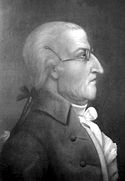| Case | Citation | Comments | Link to Opinion or Volume |
|---|
| Montgomery v. Henry | 1 U.S. (1 Dall.) 49 (Pa. Ct. Err. & App. 1780) | full opinion | |
| Talbot v. Commanders of Three Brigs | 1 U.S. (1 Dall.) 95 (Pa. Ct. Err. & App. 1784) | full opinion | |
| Lawson v. Morrison | 2 U.S. (2 Dall.) 286 (Pa. Ct. Err. & App. 1792) | full opinion | |
| Hannum v. Spear | 2 U.S. (2 Dall.) 291 (Pa. Ct. Err. & App. 1795) | full opinion | |
| Ludlow v. Bingham | 4 U.S. (4 Dall.) 41 (Pa. Ct. Err. & App. 1799) | full opinion | |
| Burd v. Smith | 4 U.S. (4 Dall.) 66 (Pa. Ct. Err. & App. 1802) | full opinion | |
| Lea v. Yard | 4 U.S. (4 Dall.) 82 (Pa. Ct. Err. & App. 1804) | full opinion | |
| Purviance v. Angus | 1 U.S. (1 Dall.) 180 (Pa. Ct. Err. & App. 1786) | full opinion | |
| Lewis v. Maris | 1 U.S. (1 Dall.) 278 (Pa. Ct. Err. & App. 1788) | full opinion | |
| Kirkbridge v. Durden | 1 U.S. (1 Dall.) 288 (Pa. Ct. Err. & App. 1788) | full opinion | |
| Lacaze v. Pennsylvania ex rel. Lanoix | 1 Add. 59 (Pa. Ct. Err. & App. 1793) | full opinion | |
| M'Pherson v. M'Pherson | 1 Add. 327 (Pa. Ct. Err. & App. 1797) | full opinion | |
| Skinner v. Robison | 1 Browne 358 (Pa. Ct. Err. & App. 1804) | note only | [10] |
| Palmer v. Sparkes | 4 Yeates 385 (Pa. Ct. Err. & App. 1801) | note only | [11] |
| Hill v. West | 4 Yeates 385 (Pa. Ct. Err. & App. 1807) | case report on remand to supreme court | [11] |
| Stiles v. Girard | 4 Yeates 1 (Pa. Ct. Err. & App. 17??) | note only | [11] |
| Vasse v. Ball | 2 Yeates 185 (Pa. Ct. Err. & App. 1797) | note only | [12] |
| Johnson v. Haine's Lessee | 4 U.S. (4 Dall.) 55 (Pa. Ct. Err. & App. 1799) | full opinion | |
| Spear v. Hannum | 1 Yeates 388 (Pa. Ct. Err. & App. 1795) | note only | [13] |
| Furry v. Stone | 1 Yeates 187 (Pa. Ct. Err. & App. 1792) | note only | [13] |
| Fitzgerald v. Caldwell | 2 U.S. (2 Dall.) 215 (Pa. Ct. Err. & App. 1793) | full opinion at end of supreme court's opinion | |
| Hill's Lessee v. West | 1 Binn. 488 (Pa. Ct. Err. & App. 1808) | note only | [14] |
| Dempsey v. Insurance Co. | 1 Binn. 299 (Pa. Ct. Err. & App. 1808) | note only | [14] |
| Hassanclever v. Tucker | 2 Binn. 525 (Pa. Ct. Err. & App. 1803) | full opinion | |
| Hauer's Lessee v. Sheetz | 2 Binn. 532 (Pa. Ct. Err. & App. 1807) | full opinion | |
| Insurance Co. v. Jones | 2 Binn. 547 (Pa. Ct. Err. & App. 1807) | full opinion | |
| Ewing v. Houston | 4 U.S. (4 Dall.) 58 (Pa. Ct. Err. & App. 1799) | full opinion | |
| Livezey v. Gorgas | 4 U.S. (4 Dall.) 61 (Pa. Ct. Err. & App. 1799) | full opinion | |
|











